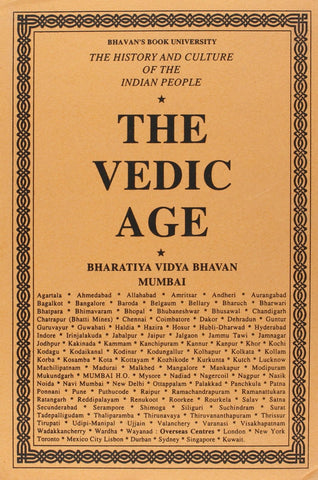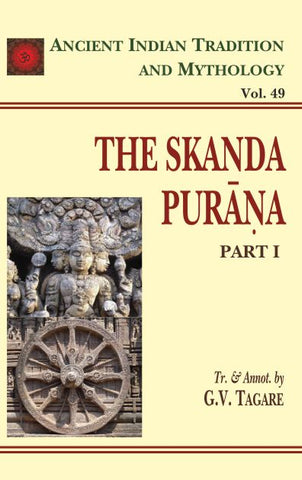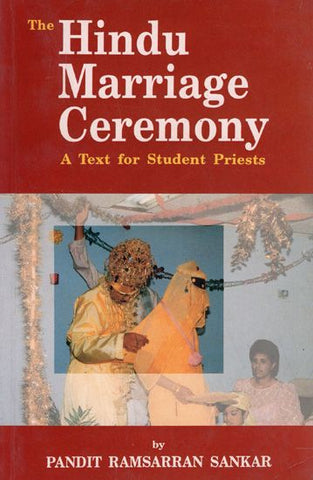Your cart is empty now.
Linguistic communities are interpretative — they have shared frameworks and strategies to fix the meaning of what is experienced through senses or communicated through language. India presents one such interpretative community in which the three major contending schools of thought the Brahmins, the Buddhists and the Jams — flourished and ‘fought’. The presence of a strong interpretative tradition suggests the existence of texts and issues that are perennially important and also a certain freedom of mind that the community has enjoyed and guaranteed.
The present study is perhaps the first comprehensive analysis of this tradition concerned with the problems of determining meaning in verbal texts. It examines the nature of the texts and the typology of textual situations in response to which a system of interpretation developed and became a shared mode of interpretation, the sastra-Paddhati. It sets up several typologies — of meaning, of textual situations and of the interpretative strategies. The book then investigates the instruments of interpretation, verbal testimony, sarvabhauma siddhanta (the meta-principle), sangati (coherence), paribhasa (metarules), laukika-nyaya (common principles of judgement), vyakarana (grammar), nirvacana (exposition or etymology) and verbal symbolism, and illustrates the use that is made of them in different kinds of texts, sruti, smrti and kavya, and by different exegetes such as sankara.
At a time of resurgence of interest in the Indian intellectual traditions in grammar, philosophy, logic, theories of meaning and poetics, and as part of a transdisciplinary search for abstract structures of knowledge this book should be of interest to students and scholars of Indian languages, linguistics, semiotics and literatures and generate lively intellectual controversy among scholars and motivate further research and study in these areas.
Kapil Kapoor (1940-) is Professor of English, Centre for Linguistics and English, and Concurrent Professor, Special Centre for Sanskrit Studies, Jawaharlal Nehru University, New Delhi He was Dean of the School of Language, Literature and Culture Studies, JNU, during 1997-99 and Rector of the University from 1999 to 2002. His teaching and research interests include literary and linguistic theories — both Indian and Western, philosophy of language, nineteenth century British life, literature and thought, and Indian intellectual traditions. He has been lecturing on these themes and has written extensively on them. He has been teaching for almost forty-five years now. Literary Theory — Indian Conceptual Framework (1998); Canonical Texts of Literary Criticism (1995); Language, Literature and Linguistics — The Indian Perspective (1994); and South Asian Love Poetry (1994) are some of his publications. His book, Dimensions of Panini Grammar — The Indian Grammatical System, is in press.
Linguistic Communities are also interpretative Communities — they have shared frameworks and strategies to fix the meaning of what is experienced through senses or communicated through language. This is how a whole people think alike. India presents one such interpretative community in which the three major contending schools of thought — the Brahmana, the Buddhist and the Jairi — contributed, flourished and “fought.” The presence of a strong interpretative tradition suggests not only the existence of “a community” but also the existence of texts and issues that are perennially important and certain freedom of mind that the community has enjoyed in handling those texts. India’s interpretative tradition, with a history of more than 2500 years, has addressed itself to the problem of fixing the meaning of srutis (the Vedas), Smrtis (philosophical and technical treatises, i.e., sästras) and Kavyas (literary compositions).
The present study is a comprehensive, though not an exhaustive analysis of this tradition, which involves the status and nature of texts, the tasks and types of interpretation, and the mode or strategies of interpretation (sastra-Paddhati) such as theories of language and of meaning, conventions or meta-rules of interpretation, the structure of argument and disputation and the science of exposition or etymology
Its principal concern is the problem of determining the meaning of verbal texts. Though the same principles are involved in the interpretation of sculpture, painting and architecture. It examines the nature of the texts and the typology of textual situations in the context of which a system of interpretation developed and was refined from Yaska to Kumarila Bhatta and which became a shared mode of interpretation in the tradition — the sastra-Paddhati. The book sets up several typologies — of meaning, of textual situations that invoke the process of interpretation and of the interpretative strategies. The book then proceeds to briefly describe the devices or instruments of interpretation — verbal testimony, sarvabhauma siddhanta, sangati Paribhasa, laukika nyaya, vyakarana, sabda-sakti and theory of verbal symbolism and illustrates the use that is made of them (i) in different kinds of texts, sruti, Smrti and Kavya, and (ii) by different exegetes such as sankara. The text situations — contradictions, transparency and opacity, etc., and the interpretative methodologies are sought to be illustrated through an example analysis, in the last chapter of, Adi sankara’s commentary on chapter 2 of The Bhagavad-Gita. On account of the centrality of meaning, artha, and language in out civilization, and the great value attached to knowledge, a science of interpretation involving theories of meaning, principles of judgement and modes of disputation developed in India, which is unequalled elsewhere in its rich methodological framework and in its wide, continuous application.
The present study originated as a series of lectures to the research students at the Jawaharlal Nehru University, and then appeared, in its first birth, as a long article in The Journal of the School of Languages, J.N.U. This book is a comprehensively revised and extended version that has resulted from a series of question and answer sessions with my students. I am grateful to them for their searching, and always significant, questions and for the great interest they took in this subject. It is still an ongoing study, as far as I am concerned, for its essential content — the problem of meaning — is an endless inquiry. And in the Indian context, it involves so many intellectual giants — Yaska, Katyayana, Patanjali, sabara, Bhartrhari, Kumarila Bhatta, Adi sankara — that a student like me has to approach this subject with humility and piety. The purpose has been to disseminate among the young Indians, some ideas and the method of inquiry of these important Indian thinkers.
Finally, a word about the word “tradition.” The word “tradition” has these days been used in opposition to “modernity.” But, this is a motivated use, to which we need not and must not subscribe. “Tradition” is the mechanism of transferring ideas from one generation to the other. As such, it represents the cultural and intellectual continuity of an ancient civilization and only a few cultures have such heritage of a rich tradition. The Indian tradition is continuous and pervasive and lives in the minds and lifestyles of the average Indian. It has been marginalized for the educated by our educational system, particularly since 1947, producing in the process a whole generation of rootless, de-culturized, subordinated minds, For the mind to be free and innovative, it is necessary to relocate ourselves in this scholarly tradition.
I am very thankful to my former student and now a distinguished colleague, Dr. Rajnish Kumar Mishra, who read the manuscript over and over again and has contributed in so many ways that are difficult to acknowledge. I also thank TuIsi, my Ph.D. student, for preparing a scholarly index.
| Preface | VII | |
| 1 | Language and interpretation | 1 |
| Language and thought and grammar | 1 | |
| Linguistic thought and grammar | 4 | |
| 2 | Text and commentary tradition | 39 |
| The interpretative tradition | 39 | |
| Characteristics of the tradition | 44 | |
| Types of interpretation | 47 | |
| The commentary tradition | 49 | |
| Types of commentaries | 57 | |
| Purpose and value of commentaries | 58 | |
| Status of the text | 61 | |
| Nature of the texts | 70 | |
| Task and types of interpretation | 77 | |
| 3 | The shared mode of interpretation | 97 |
| Sastra-Paddhati | 97 | |
| Instruments of exegesis | 97 | |
| 4 | Adi sankara on the bhagavad-gita and example of the interpretation | 168 |
| Annotation of major terms | 184 | |
| Bibliography | 193 | |
| Index | 213 |
Sample Pages
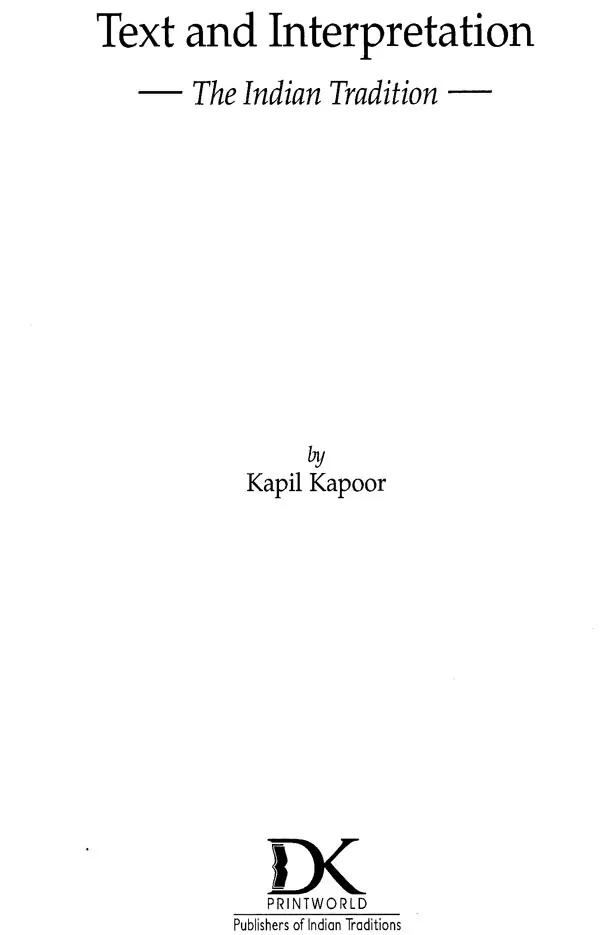
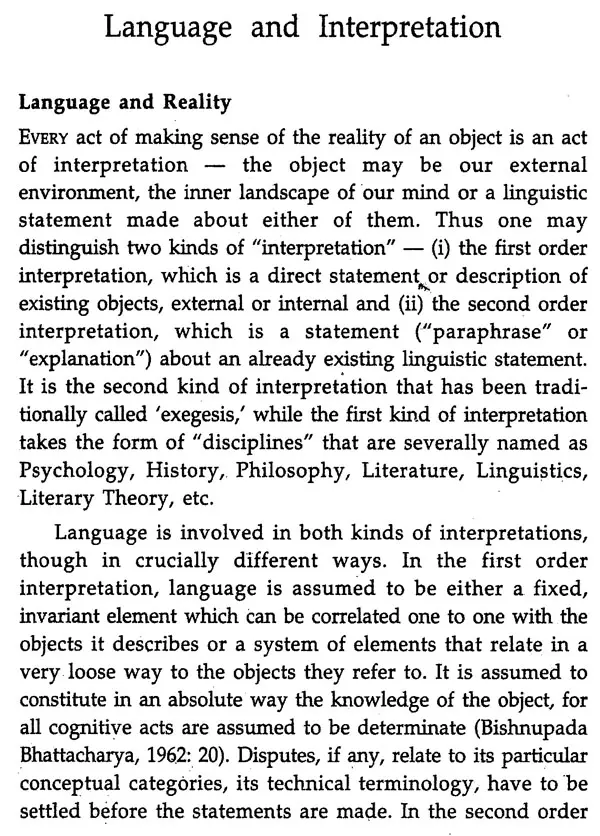
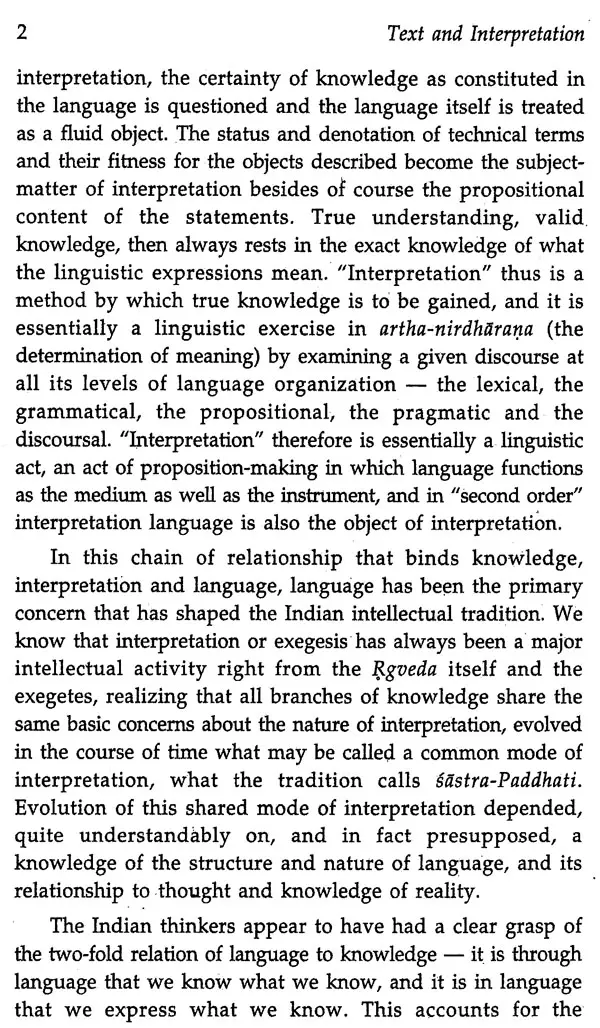
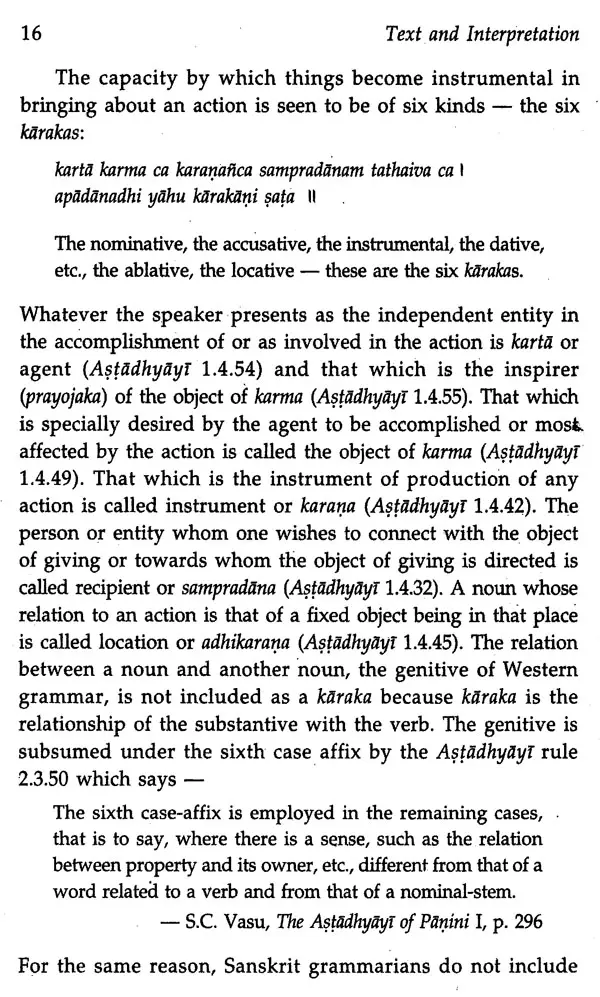
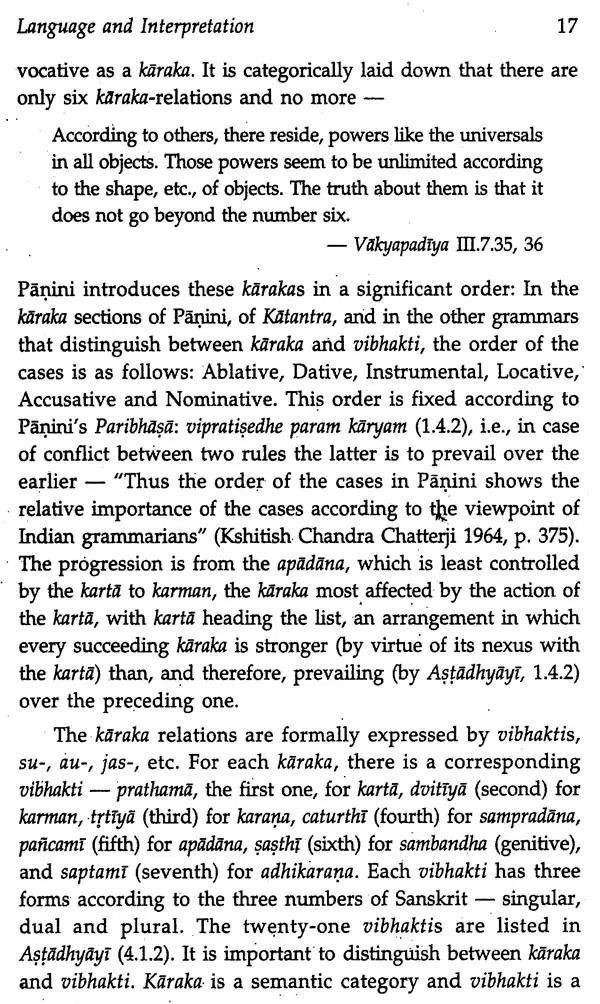
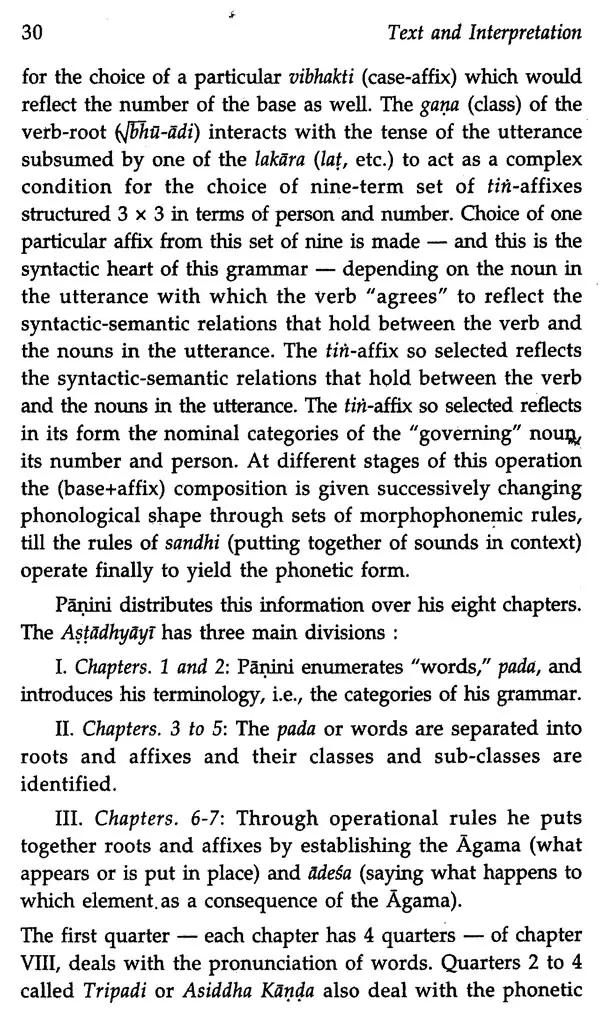
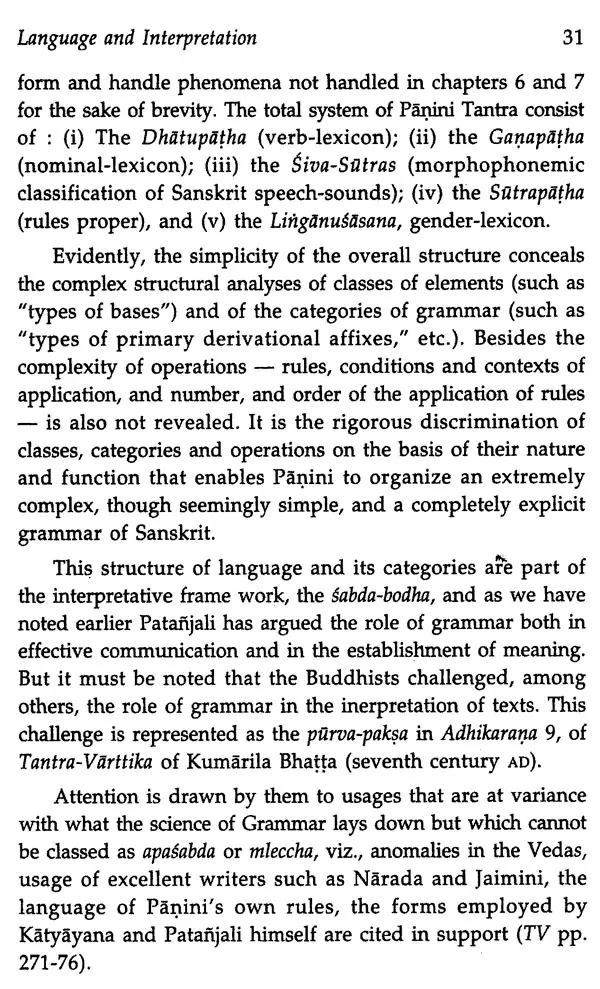
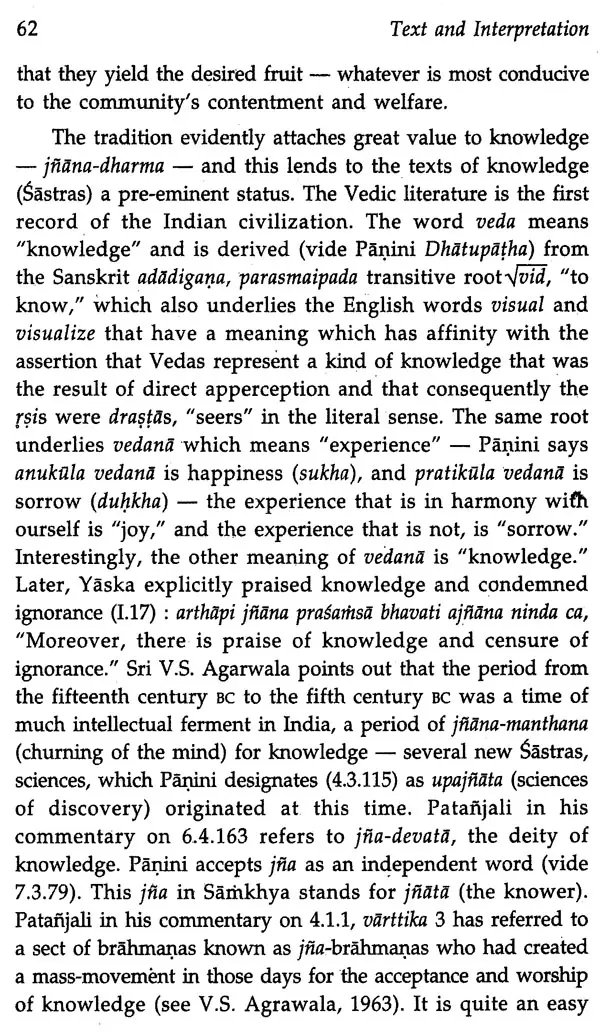
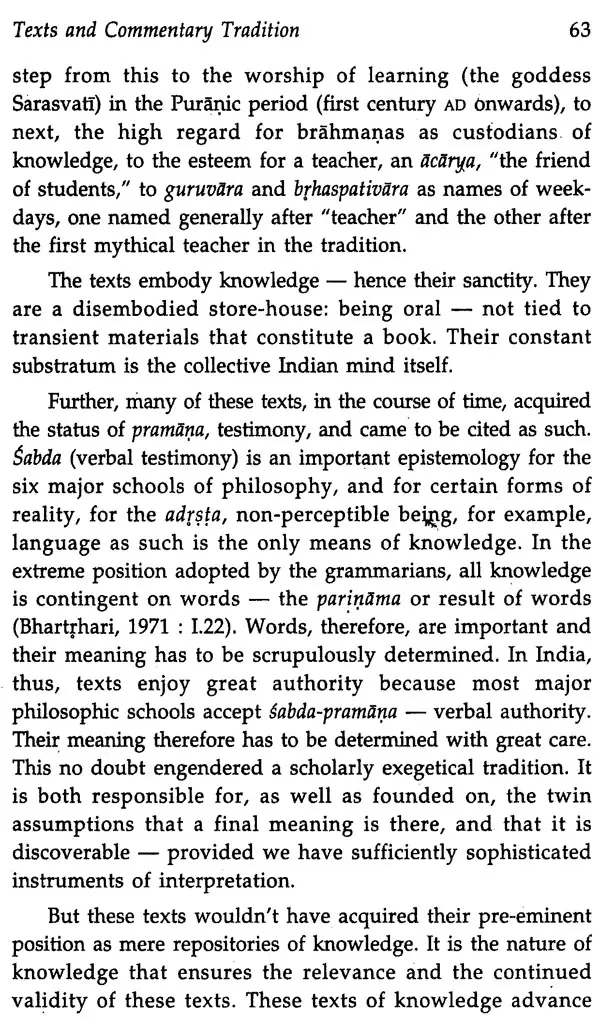
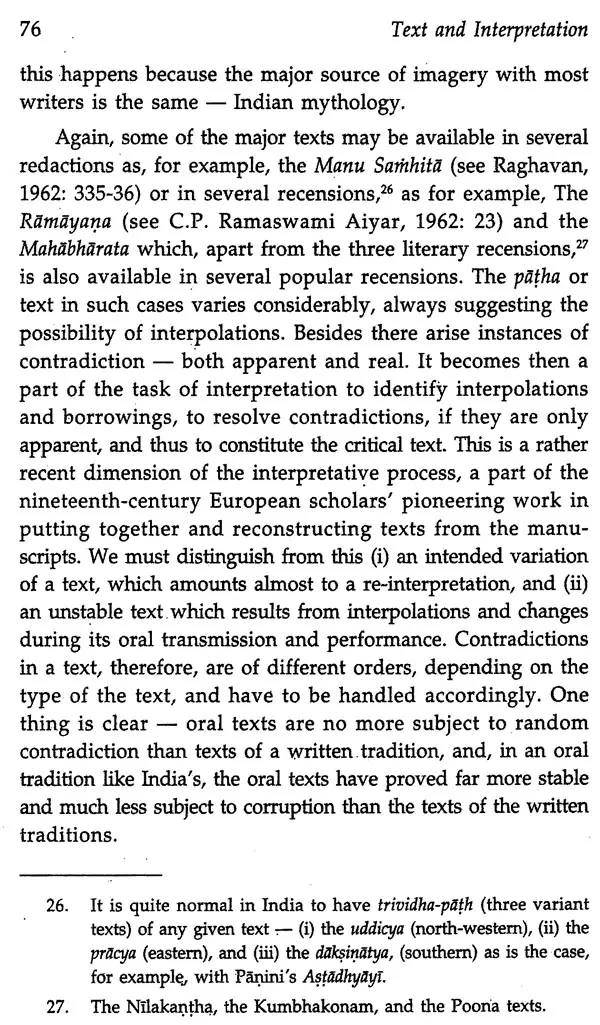
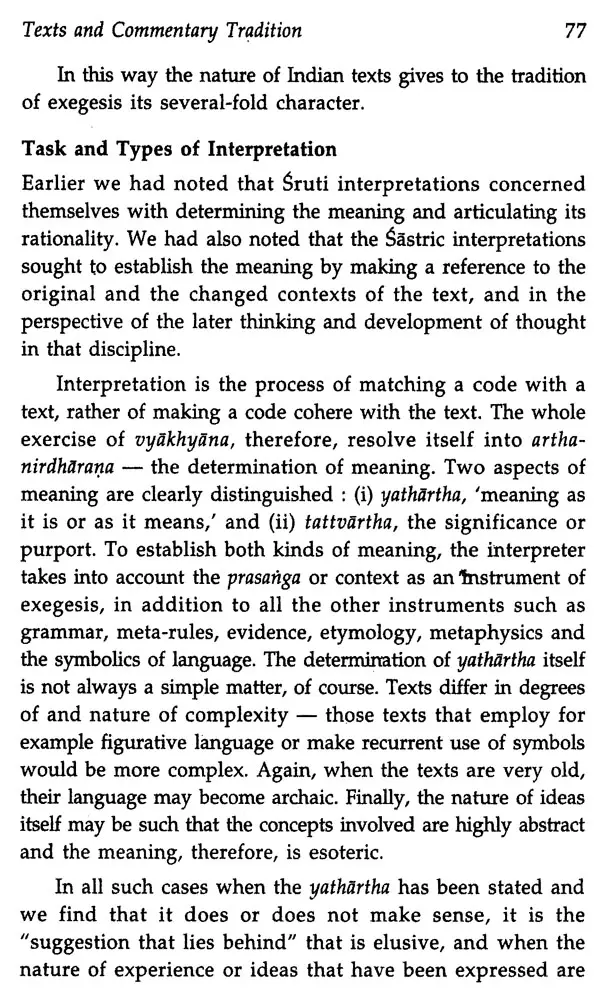
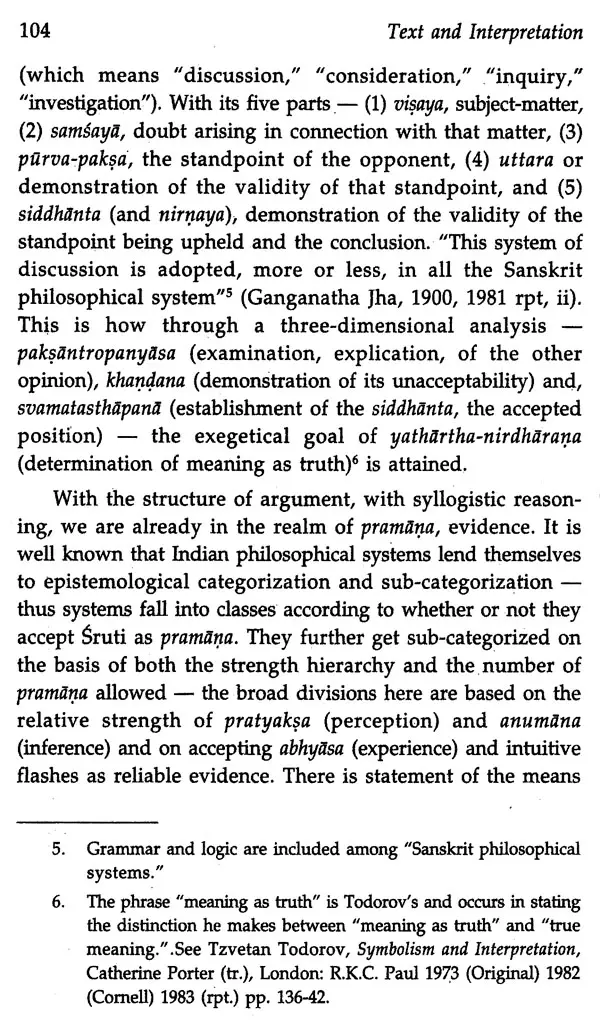
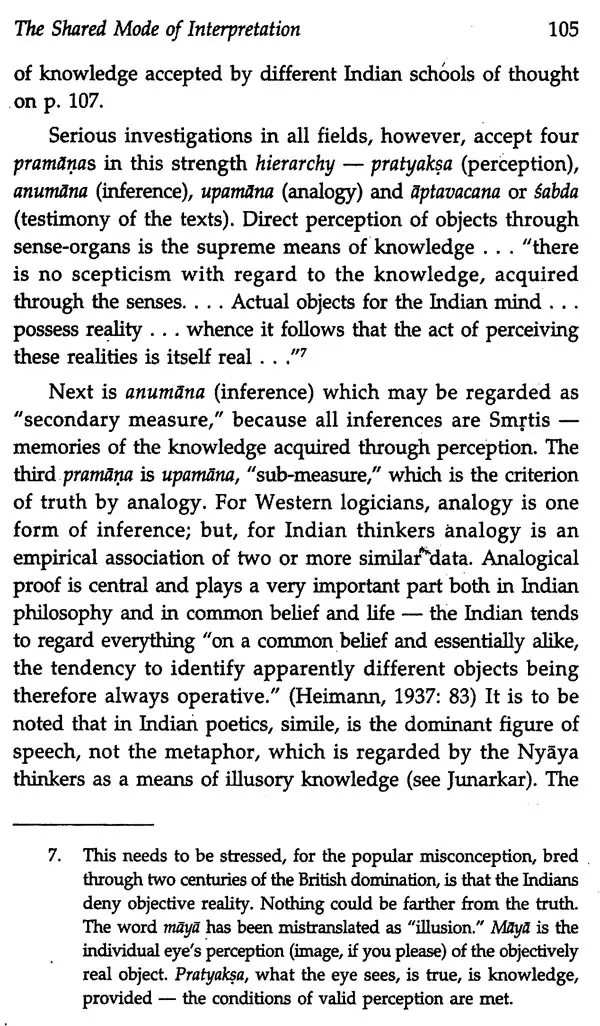
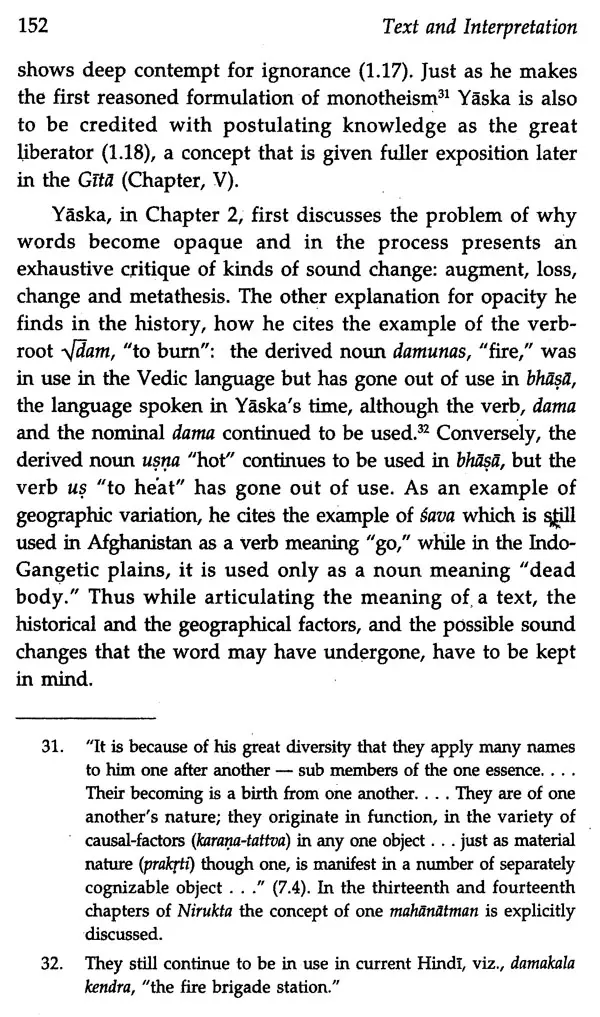
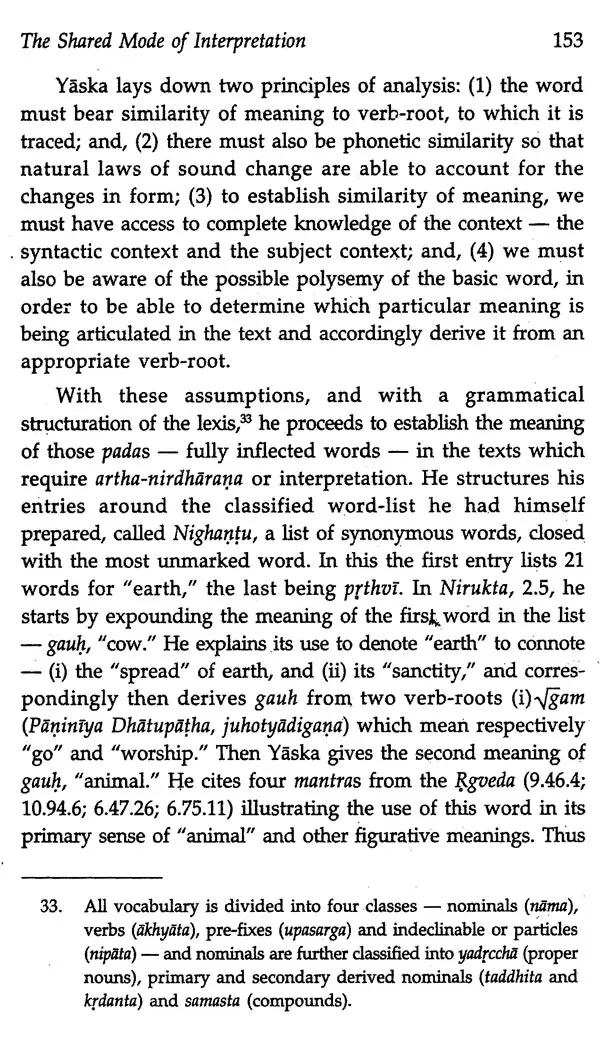
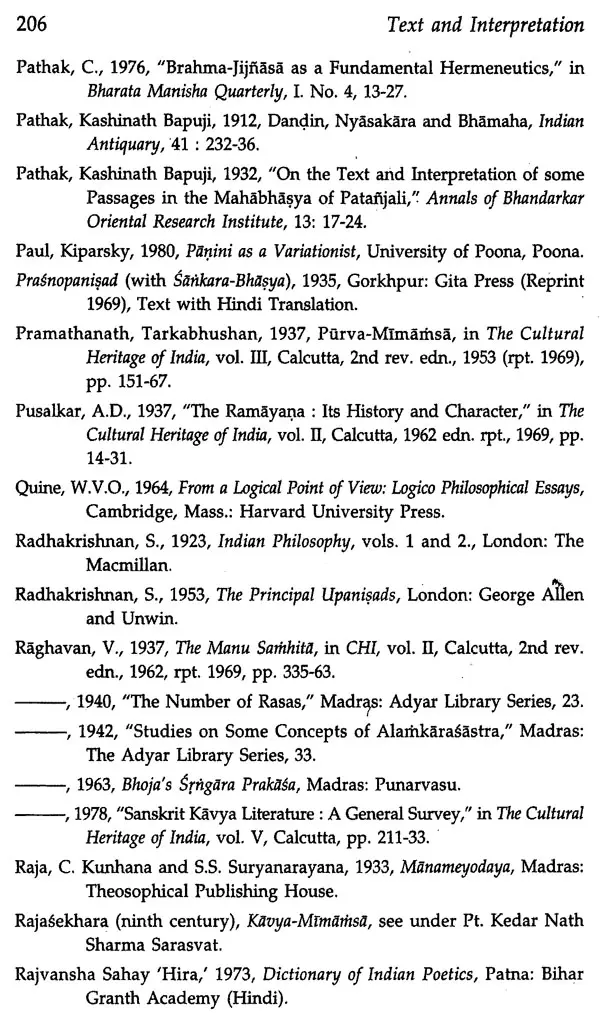
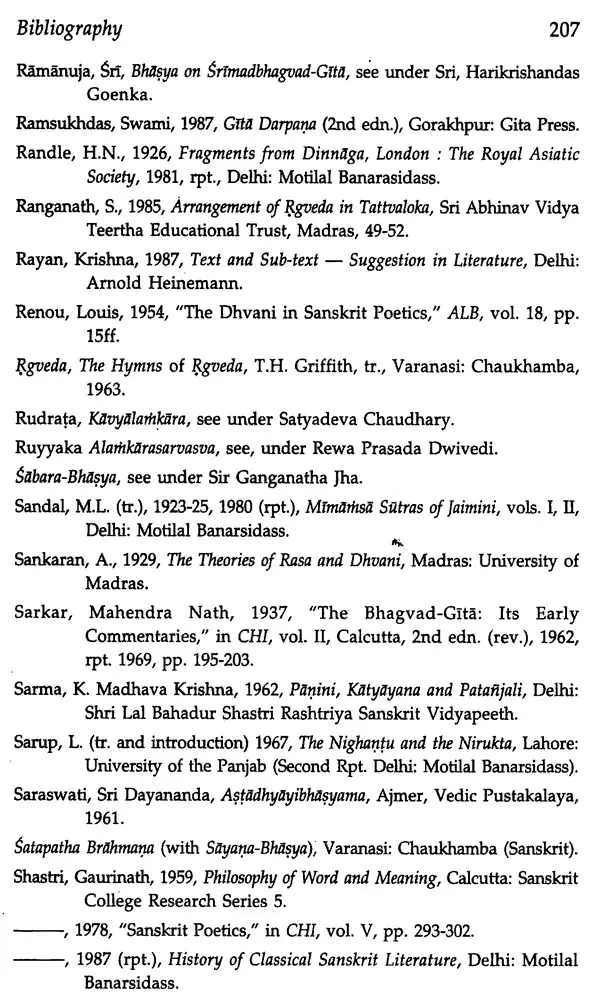
Delivery and Shipping Policy
- INTERNATIONAL SHIPPING
- Rs.1000-1100/kg
- ESTD. Delivery Time: 2-3 weeks (depending on location)
- Bubble Wrapped with Extra Padding
- NATIONAL SHIPPING
- NCR: Rs. 30/half kg
- Standard: Rs. 80/half kg
- Express shipments also available on Request
- ESTD. Delivery Time: Ranging from 1-4 days up to 7 business days (Depending on your choice of Delivery)
- TRACKING
- All orders; national or international, will be provided with a Tracking ID to check the status of their respective orders
- Depending on the Shipping Service, Tracking ID may be used on their respective tracking portals
Frequently Asked Questions (FAQs)
Domestic Shipping: 3-4 Days (after shipping)
International Shipping: 1-2 weeks (based on your location)
You will receive an email once your order has been shipped or you can email us if you didn't receive tracking details (info@mlbd.co.in)
Every book that we sell is the latest edition except all the rare books
Yes, we do provide free shipping, only on domestic orders (within India) above Rs.1500


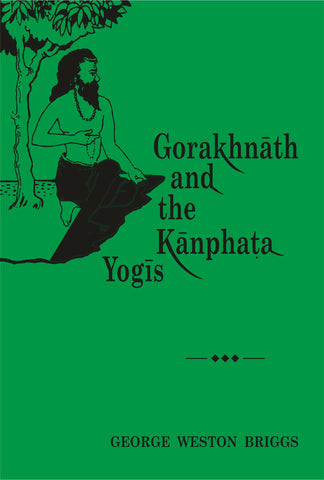
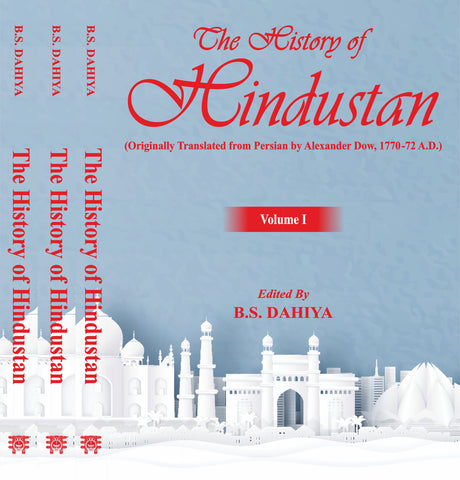
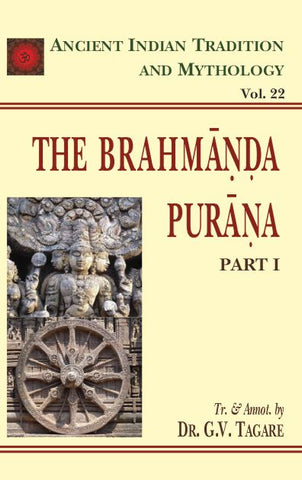
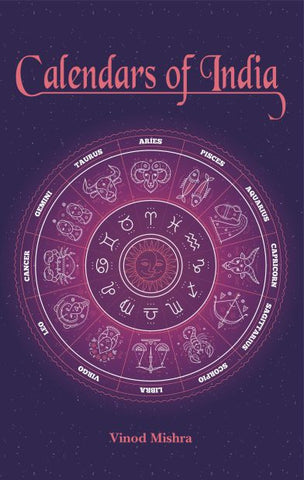
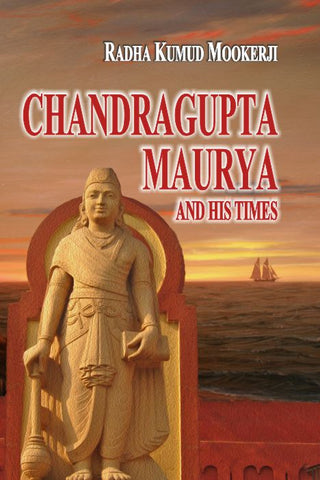
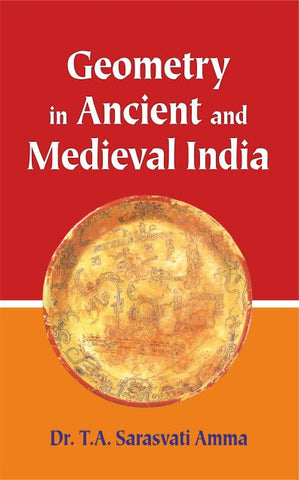
![A HISTORY OF INDIAN PHILOSOPHY [5 VOLUMES] by Surendranath Dasgupta](http://www.motilalbanarsidass.com/cdn/shop/products/HISTORYOFINDIANPHILOSOPHY_large.jpg?v=1675238163)
